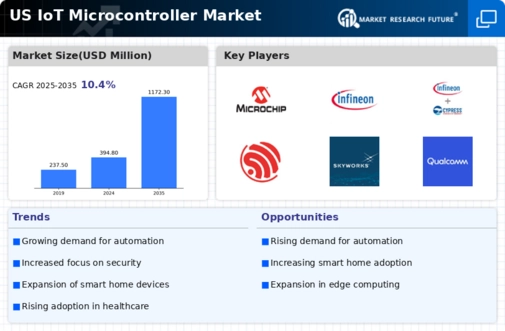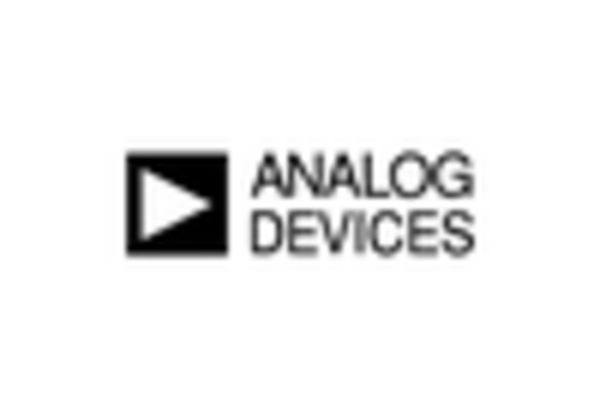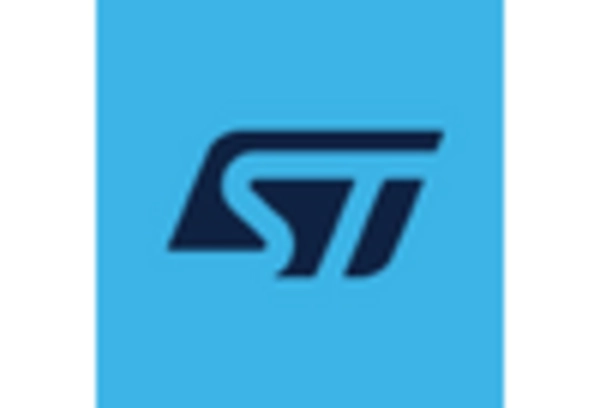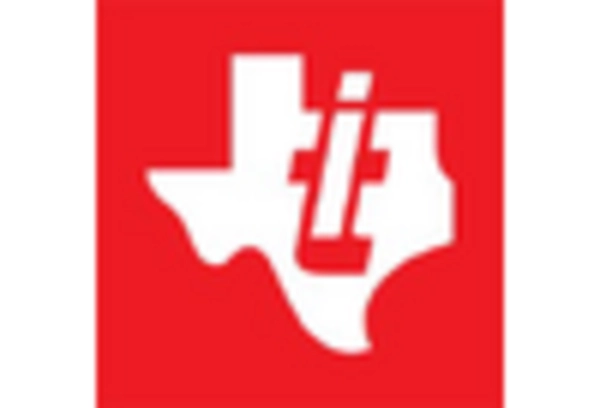Growth in Agricultural Automation
The agricultural sector is experiencing a technological revolution., with automation playing a crucial role in enhancing productivity. The iot microcontroller market is benefiting from this trend as farmers increasingly adopt IoT solutions for precision farming. These solutions often utilize microcontrollers to monitor soil conditions, crop health, and weather patterns. The US agricultural technology market is expected to grow by approximately 12% annually, indicating a rising demand for efficient microcontrollers that can support these applications. This growth suggests that the iot microcontroller market will continue to expand as agricultural practices evolve to incorporate more advanced technologies.
Expansion of Smart City Initiatives
The push towards smart city initiatives in the US is significantly impacting the IoT microcontroller market.. As urban areas seek to improve infrastructure, reduce energy consumption, and enhance public safety, the demand for smart sensors and devices is escalating. These devices often rely on sophisticated microcontrollers to process data and communicate effectively. According to recent estimates, investments in smart city projects are expected to reach $100 billion by 2025, creating a substantial opportunity for microcontroller manufacturers. This trend suggests that the iot microcontroller market will experience growth as cities implement innovative solutions to address urban challenges.
Advancements in Automotive Technology
The automotive sector is undergoing a transformation with the integration of IoT technologies., which is positively influencing the iot microcontroller market. As vehicles become increasingly connected, the need for reliable microcontrollers to manage communication, navigation, and safety features is paramount. The US automotive market is projected to invest over $50 billion in connected vehicle technologies by 2025. This investment is likely to drive demand for advanced microcontrollers that can support various applications, from autonomous driving to vehicle-to-everything (V2X) communication. Thus, the iot microcontroller market stands to gain from the automotive industry's shift towards smarter, more connected vehicles.
Rising Focus on Smart Grid Technologies
The transition towards smart grid technologies is reshaping the energy landscape in the US., thereby impacting the iot microcontroller market. As utilities seek to enhance grid reliability and efficiency, the integration of IoT devices becomes essential. These devices often rely on microcontrollers to facilitate real-time data collection and communication. The US smart grid market is projected to reach $80 billion by 2026, driven by investments in modernizing infrastructure. This trend indicates a growing need for advanced microcontrollers capable of supporting the complex requirements of smart grid applications, positioning the iot microcontroller market for substantial growth.
Surge in Demand for Wearable Technology
The increasing popularity of wearable technology is driving the iot microcontroller market. As consumers seek devices that monitor health metrics, fitness levels, and other personal data, manufacturers are integrating advanced microcontrollers to enhance functionality. The wearable technology segment is projected to grow at a CAGR of approximately 15% through 2026, indicating a robust demand for efficient and compact microcontrollers. This trend is particularly evident in the US, where health-conscious consumers are adopting smartwatches and fitness trackers at an unprecedented rate. Consequently, The IoT microcontroller market is likely to benefit from this surge., as manufacturers strive to meet the evolving needs of consumers.















Leave a Comment